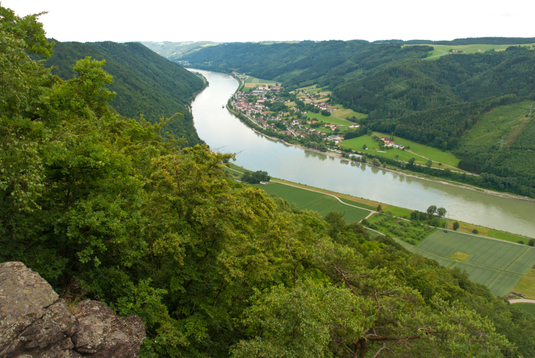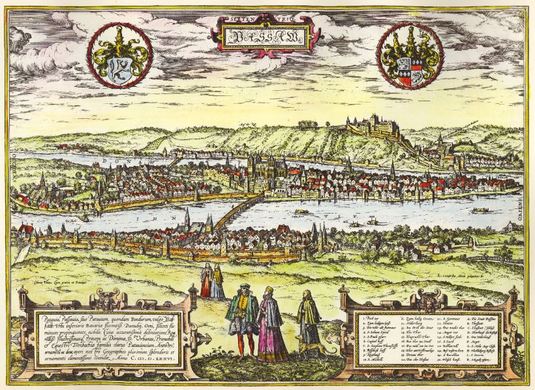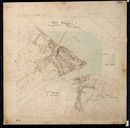Danube Excursion: Deggendorf—Passau
Deggendorf → Vilshofen → Jochenstein → Passau
04.08.2017
by Leon Gomoll
Bridge-Building and Nature Conservation on the Donau
Early Modern Bridges and Politics in Bavaria
On the second day of our field trip, we learned about Early Modern bridge-building in Bavaria. Martin Keßler’s talk focused on the politics of bridges, using as an example the bridge of Vilshofen, a small town near Passau. In the Middle Ages, Passau was an autonomous bishopric, independent from the duchy of Bavaria and archbishopric of Salzburg. It maintained its autonomy from Bavaria until 1802. Early Modern Bavaria included the lands between the rivers Lech to the west, the Danube to the north, and the Inn to the east. Within the territory of Bavaria there were many other stand-alone territories, for example imperial free cities like Augsburg and Nuremberg.

Donauleiten near Passau. Photo Credit: Leon Gomoll.
Passau was one of Europe’s most important cities for salt trade in the Middle Ages: in the sixteenth century, 1.2 million people received their salt from Passau. A notable portion of the funding for Passau’s architectural monuments can be attributed to the salt trade, which generated a lot of revenue for the city. It was also Bavaria’s main source of income. Salt was mined in the Alps and the brine (liquid salt) was transported via pipelines from Reichenhall and Hallein (hall is the Celtic for salt) down from the Alps, where it was then collected by merchants.

Historic map of Passau (between 1572 and 1618). The St Nikola monastery can be seen far on the left-hand side, on the “island” between the rivers Donau and Inn.
Vilshofen was a town located right at the border between Bavaria and Passau. It was founded in the eighth century and in the early thirteenth century, it received its town rights from the duke of Bavaria. Between 1591 and 1592, when Vilshofen had around 2,000 habitants, a bridge was built at the convergence of the rivers Danube and Vils. The bridge was built with the intention of diverting some of Passau’s salt trade to Bavaria, as merchants could trade salt in Vilshofen without having to pay the Passau tolls. Salt has been one of the most important resources throughout human history due to its many uses, such as treating leather and conserving food. Under these circumstances, the bridge can be seen as a political tool and in the following years, a “salt war” erupted between Bavaria and Passau. Passau merchants did not like the new competition from Vilshofen and fought it vigorously and the bishop of Passau tried to intervene. However, the dukes of Bavaria were well connected in the seventeenth century, and Vilshofen itself had ties to Prague, which was the seat of the Roman emperor. From this point on, Passau lost its stronghold of the salt trade and declined in prosperity.
Read the full article on Seeing the Woods.





